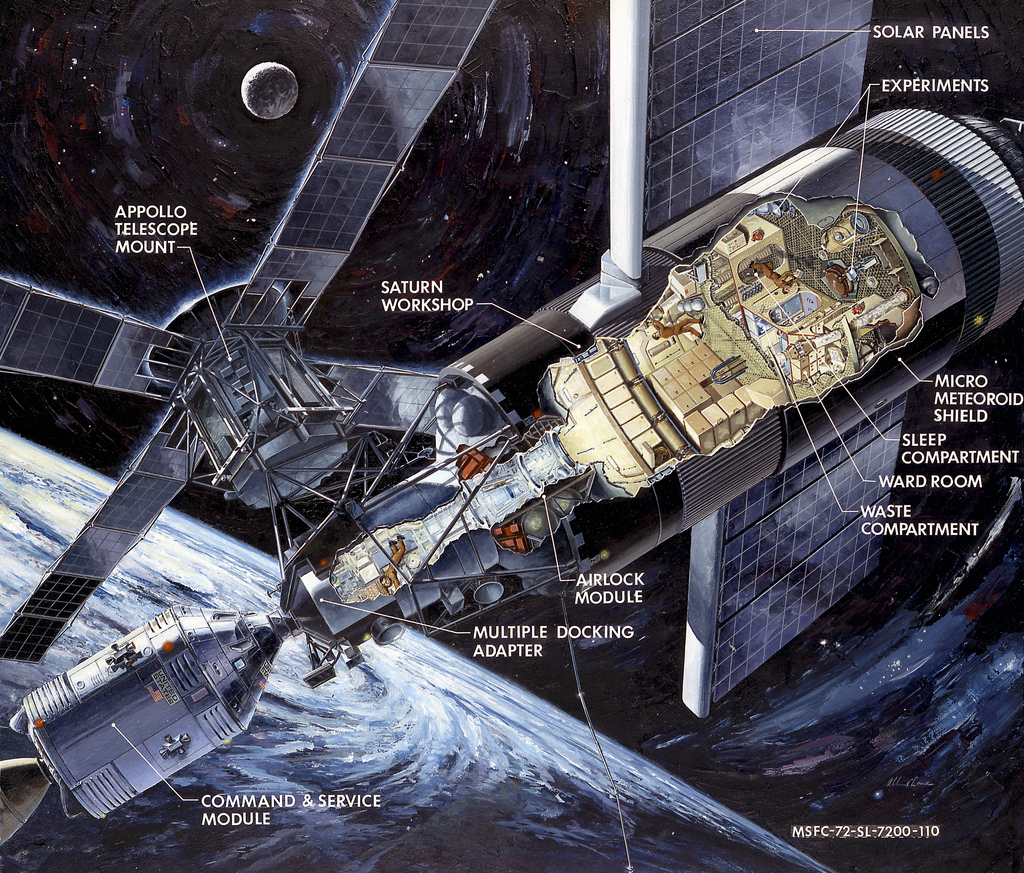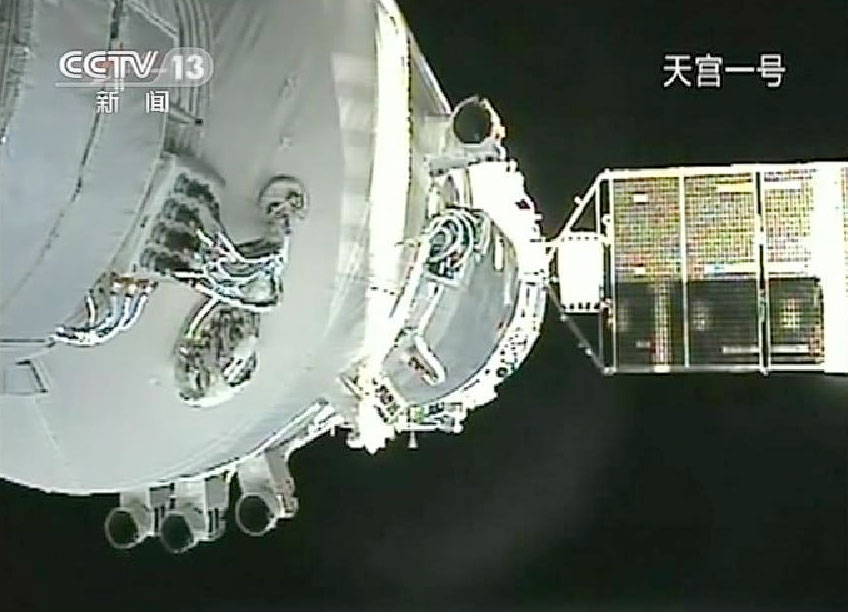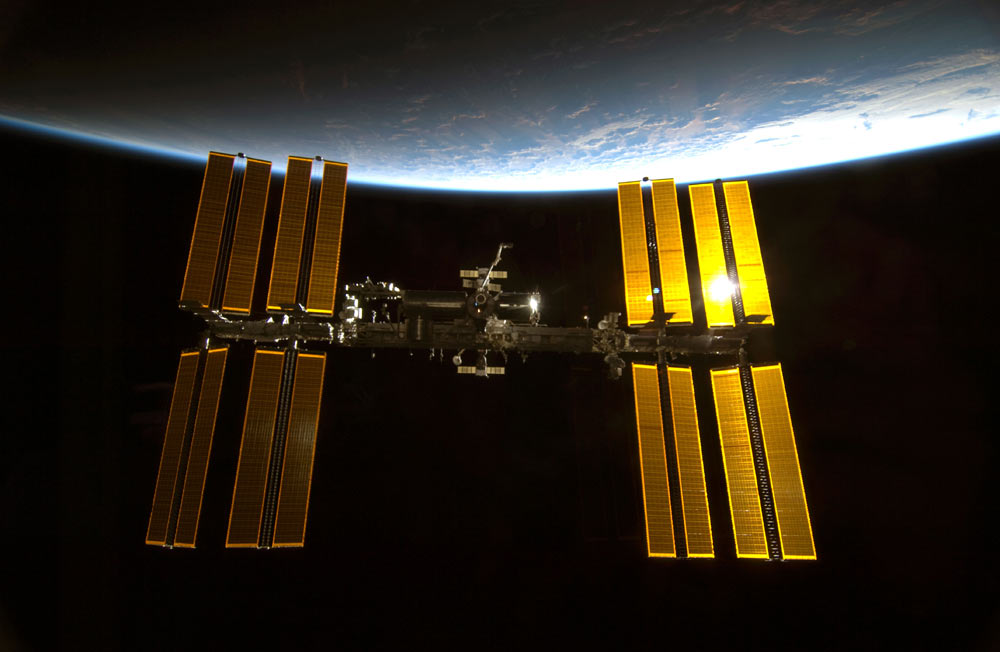Space Station Evolution: 6 Amazing Orbital Outposts
Human Outposts in Space
Space stations provide habitats for humans in space on longer-duration missions. These stations do not possess abilities to launch or land, being designed for use in space only. Several space stations have orbited the Earth since 1971, with two currently active at the time of this writing.
FIRST STOP: Soviet Union's Salyut Stations
Salyut 1 — Salyut 5 (Soviet Union)
Launched by the Soviet Union in 1971, the Salyut 1 space station orbited the Earth almost 3,000 times during its 175 days in space before intentionally crashing into the Pacific Ocean. The station stretched about 65 feet (20 meters) long and 13 feet (4 meters) in diameter at its widest point.
Tragedy struck the station's mission when the second crew to visit, aboard Soyuz 11, experienced depressurization during their return to Earth, killing all three cosmonauts. The station did not host any further visitors. The Soviet Union then attempted to orbit stations DOS-2, Salyut 2 and Cosmos 557, but failed. Salyut 3 experienced some flaws, while Salyut 4 and Salyut 5 completed their missions successfully.
NEXT: Salyut 6 and 7
Salyut 6 and Salyut 7 (Soviet Union)
Both of these stations represented a second generation of the Salyut program. A new design possessed two docking ports, allowing refueling and resupply from uncrewed Progress cargo ships.
Durations of stays increased, and crews could receive visitors. A Salyut 6 crew stayed for 185 days, the longest duration at that time, beating the 84-day record of the last Skylab crew. Salyut 6 launched in 1977 and deorbited in 1982. Salyut 7 launched in 1982 and deorbited in 1991. [Top 10 Russian and Soviet Space Missions]
Breaking space news, the latest updates on rocket launches, skywatching events and more!
NEXT: Skylab, NASA's 1st Space Station
Skylab (United States)
The United States launched its first space station, Skylab, in 1973. The mission experienced severe problems almost immediately, as on launch a meteorite shield tore off, ripping away a solar array and preventing the other from operating. The decrease in power represented a great obstacle.
The first crew that arrived 11 days later had to confront many frustrating challenges. Having overcome the initial difficulties, three three-person crews visited the station.[Photos: Skylab, the 1st U.S. Space Station]
The third crew set a record of 84 days in space, but not without complaint about overwork, which led to tensions and finally compromise with ground controllers. Skylab deorbited on July 11, 1979, well ahead of schedule because of high solar activity, with some spacecraft parts accidentally impacting Western Australia. Notably, the impending re-entry of Skylab produced a huge media reaction, and inspired a hilarious rant by John Belushi on the Saturday Night Live television show. [See photos of Skylab debris in Australia]
NEXT: Mir, Russia's Long-Lived Outpost
Mir (Soviet Union/Russia)
Russia's Mir space station (the name means "peace" or "world") operated more than 15 years in low Earth orbit. Possessing a modular design, its first module launched in 1986. Amazingly, the first cosmonauts to visit the station first flew to Salyut-7 to repair it, then they flew to Mir for its opening. Six additional modules were added over the course of a decade.
During that time the Soviet Union dissolved. (The cosmonaut aboard Mir at the time, Sergei Krikalev, is sometimes known as "the last Soviet citizen" as a result.) The long-lived Mir hosted every record-setting visitor in long-duration spaceflight. Physician Valeri Polyakov lived aboard Mir for a bit over 437 days, still the record. [Most Extreme Human Spaceflight Records]
During the Shuttle-Mir Program (1994-1998), even American astronauts visited the station. As the station aged, it developed numerous problems including an infamous onboard fire. Planning for the International Space Station eventually overtook Mir's resources, and it deorbited in 2001. Concerns about space debris again alarmed many, but the pieces of Mir fell harmlessly into the southern Pacific Ocean.
NEXT: Tiangong 1, China's 1st Space Lab
Tiangong 1 (China)
The newest space station, China's Tiangong 1 ("Heavenly Palace"), consists of a single-module design launched on Sept. 29, 2011. The space lab measures 34 feet (10.4 meters) long and 11 feet (3.35 meters) wide. So far the station has hosted two spacecraft, Shenzhou 8 , an uncrewed ship, and Shenzhou 9, which carried the first three crewmembers to visit the station, including China's first female taikonaut. A third mission, Shenzhou 10, is planned for sometime between June and August of 2013. [See photos of China's Tiangong 1 space lab]
As Tiangong 1 is largely considered a prototype for a larger station, it is expected to be deorbited in 2013 after two years of operation.
NEXT: International Space Station
International Space Station (15 Countries)
The International Space Station (ISS) represents one of humanity's greatest achievements, being the most complex engineering project in history and the largest human structure in space, coming at a cost of $100 billion dollars. Fifteen countries in five different space agencies, including NASA, Russia's Federal Space Agency, the European Space Agency, the Canadian Space Agency and the Japan Aerospace Exploration Agency, cooperated to create this flying space laboratory. [See the ISS from the Inside Out (Infographic)]
Built in sections, the station began in 1998 with the launch of Russia's Zarya's module. Today it spans the area of an American football field, possessing numerous pressurized and unpressurized modules. [Rare Photos: Space Shuttle at Space Station]
Humans have continuously occupied the International Space Station since Nov. 2, 2000. In that time, 204 individuals have visited it. As of July 2012, 125 vehicles have launched to the space station since the launch of the first module: 81 Russian vehicles, 37 space shuttle missions, the U.S. SpaceX Dragon commercial vehicle (several missions), three European and three Japanese vehicles. The first crews consisted of three-person teams, dropping to two after the Columbia shuttle disaster, but as of 2009, six people can stay aboard the station at one time. Two Russian Soyuz modules remain docked to the station for crew departures.
The ISS receives commands from mission control centers in Houston or Moscow. The station has funding to operate through 2020, though it may remain capable of usefulness through 2028. [Video Show: See Inside the International Space Station]








